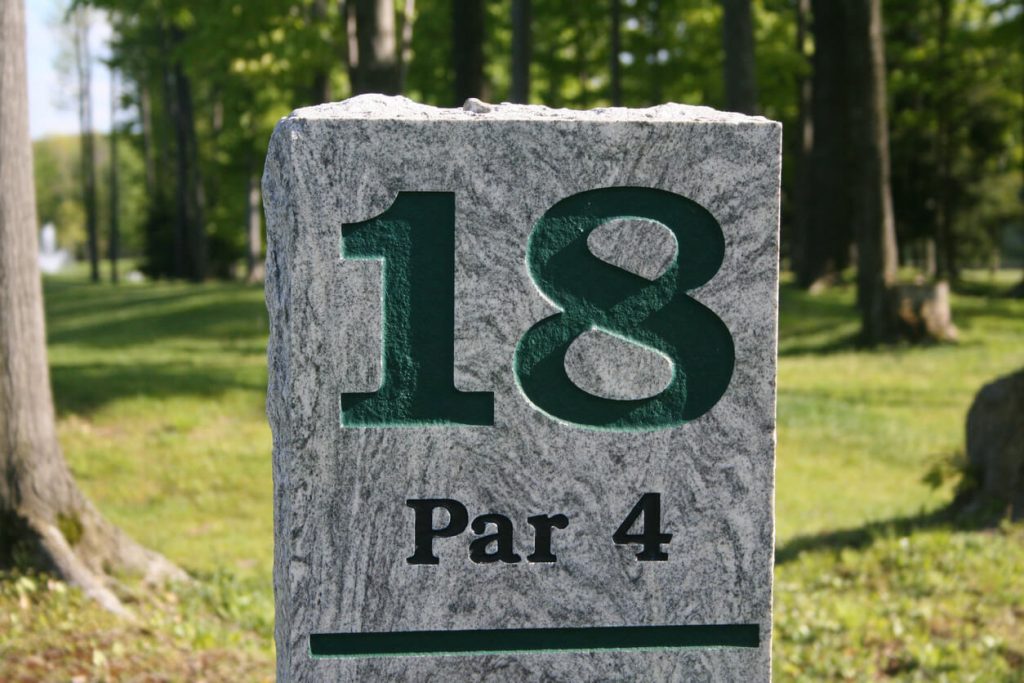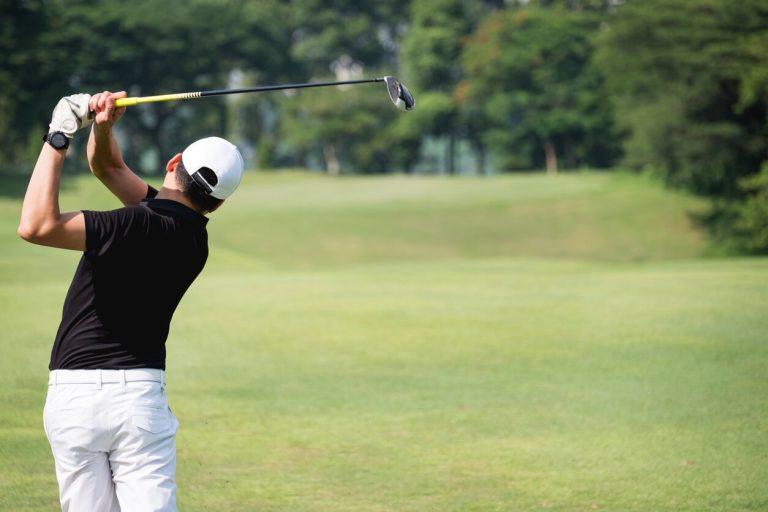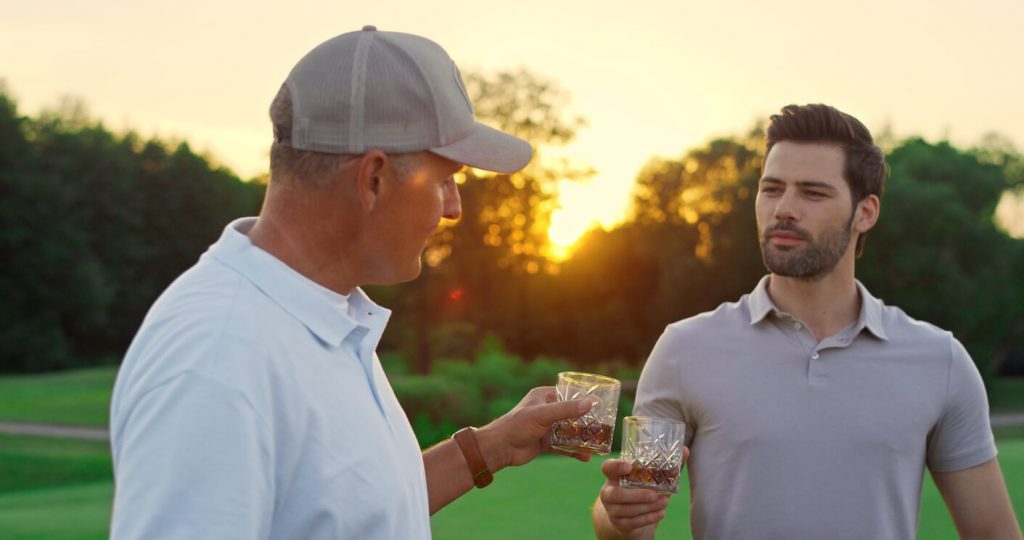13 golf traditions and superstitions and what they mean

Golf has been played for generations. What started as a
rudimentary stick and ball game played on the wild links land of Scotland’s
east coast is now an international sport enjoyed by millions across the globe.
During that long evolution, many practices and golf traditions have become so engrained within the game as to become custom.
With fortune often playing a significant part in a successful
round of golf, it’s understandable that golfers have become a superstitious
bunch. Players abide by golf traditions, sometimes centuries-old, pretty much every
time they step out on the course.
In this blog, we delve into some of these great golf traditions and superstitions and take a closer look at how and why they first started.
Golf traditions and superstitions
18 holes

When golf began in the 1700s, Leith and Bruntsfield Links
were five-hole courses, and the Old Course at St Andrews had 11, often played
twice to make a round of 22 holes.
However, in 1764, the Old Course was altered to compress the first four holes into two (plus reversing the nines) to become an 18-hole course. The Old Course was so influential that 18 holes became the norm from that point on.
The universal call of ‘Fore’


No matter where a golfer comes from and what language
they speak, when they hit a bad shot that could fly close to other golfers,
they will shout ‘fore’.
It originates from the days when a ‘forecaddie’ was used
by most ‘gentleman golfers’ to walk forward from the tee down the fairway in
order to spot where their player’s ball landed. If the ball were heading in
their direction, the player would shout ‘Forecaddie’ as a warning, which was later
shortened to ‘Fore!’.
Related: Why do golfers shout fore?
Hole-in-one drinks round


Golf tradition dictates that those who beat the 12,500-1 odds to have an ace buy everyone a drink in the clubhouse afterwards.
Thankfully, golf insurance exists to help cover some of the cost of hefty bar bills these days, but nowhere in the world is this tradition more expensive than in Japan.
Here, the lucky (or unlucky, depending on which way you
look at it) golfer can end up shelling out thousands on drinks and gifts.
Related: The cost of hitting a hole-in-one
Hat etiquette


Golfers take their hats off when they shake hands with
their playing partner or opponent. This is considered essential manners and has
become golfing etiquette the world over.
However, the practice of removing headgear when greeting goes far beyond golf. In fact, it emanates from medieval nobility as a sign of trust that you weren’t expecting an imminent crack on the head from the person you were meeting.
Gimmes


Only seen in match play golf, gimmes are when a golfer
can concede a putt to their opponent.
This used to refer to a putt from a shorter distance away than the top of the putter to the end of the grip, or ‘inside the leather’, as it was known. But this has since developed, as we saw at the 2023 Ryder Cup in Rome, where it was instead from the putter head to the start of the grip.
Gimmes can only be offered, not requested. They are a
kind gesture when offered but can also play into the psychology of a match. A
golfer may give generous gimmes throughout a round but then say nothing at a crucial
point and ask their opponent to hole a short putt under pressure.
Related: What is a gimme in golf?
Dormie


In match play, when a golfer is the same number of holes ahead in a match than there are holes left to play, it is known as ‘dormie’.
This is derived from the French word ‘dormir’, meaning ‘to sleep’, and has been credited to the first known woman golfer, Mary, Queen of Scots, who was fluent in French, having spent much of her childhood in France.
Foursomes


Foursomes, or ‘alternate shot’ as it’s called in the US,
is the most traditional format of the game. Played properly, two players should
tee off while their partners wait down the fairway. This means foursomes should
be a considerably quicker game than fourballs, and not just because of an
obviously fewer number of shots.
It’s also the preferred format of the esteemed Honourable Company of Edinburgh Golfers, who play at Muirfield. That may well be because of the legendary lunch that awaits in the clubhouse!
‘The Scottish play’ of golf
When the club’s hosel (where the head is joined to the shaft) meets the ball and causes it to fly violently off to the right, there is a five-letter word for it that starts with ‘sh’ and ends with ‘nk’. However, golfers usually, hilariously, eschew using the word, preferring to describe the affliction as ‘the unmentionables’.
Breakfast ball


This is one of many Stateside golf traditions, but we’re starting to hear it said and done increasingly in Europe, too. As the name suggests, breakfast ball is an early-morning scenario that permits a golfer—perhaps having had no chance to warm up—who has duffed their opening tee shot to have another shot without counting the first.
Slang
Golf is full of slang and jargon, from ‘the yips’—when a golfer has an involuntary flinch while putting, to ‘sandbagger’—the name given to a player that keeps their handicap higher to help them win tournaments, and to ‘Texas Wedge’—when a putter is used from off the green rather than a wedge.
The Champions Dinner at the Masters
This was the brainchild of the legendary Ben Hogan, who in 1952 decided that all past winners should gather for dinner before the upcoming tournament. The defending champion chooses the menu and foots the bill. The only non-champion who can attend is the Chairman of Augusta National.
The hickory game
Hickory wood was the distinctive material of choice for
golf clubs from the late 1800s all the way up to the 1970s and ‘80s.
Bernhard Langer was the last golfer to win the Masters with a wooden-headed driver when he did so in 1993.
The hickory tradition is enjoying somewhat of a resurgence today. Six-time Open Championship venue Musselburgh (Old) Links offers hickory rentals, and growing numbers of dedicated aficionados around the globe continue to play with their beloved hickories and dress eye-catchingly like the golfers of yesteryear.
The 19th hole


As golf traditions go, the ‘19th hole’—referring
to the bar or clubhouse area for that post-round drink—is arguably one of the
best.
The Company of Gentlemen Golfers—now The Honourable Company of Edinburgh Golfers—was first formed over drinks at Luckie Clephan’s tavern following their games on Leith Links. It’s said that the idea of the ‘19th hole’ was born here.
How many of these long-standing golf traditions do you abide by yourself when playing the game? Or, how many have you seen your playing partners or opponents follow?
Although, of course, not a centuries-old tradition, you may want to consider protecting yourself and your golf equipment with specialist golf insurance before your next round or tournament.
With Golf Care, policies include Equipment Cover up to £7,500 and Public Liability of up to £10m. Click on the banner below to learn more and get a quote.








